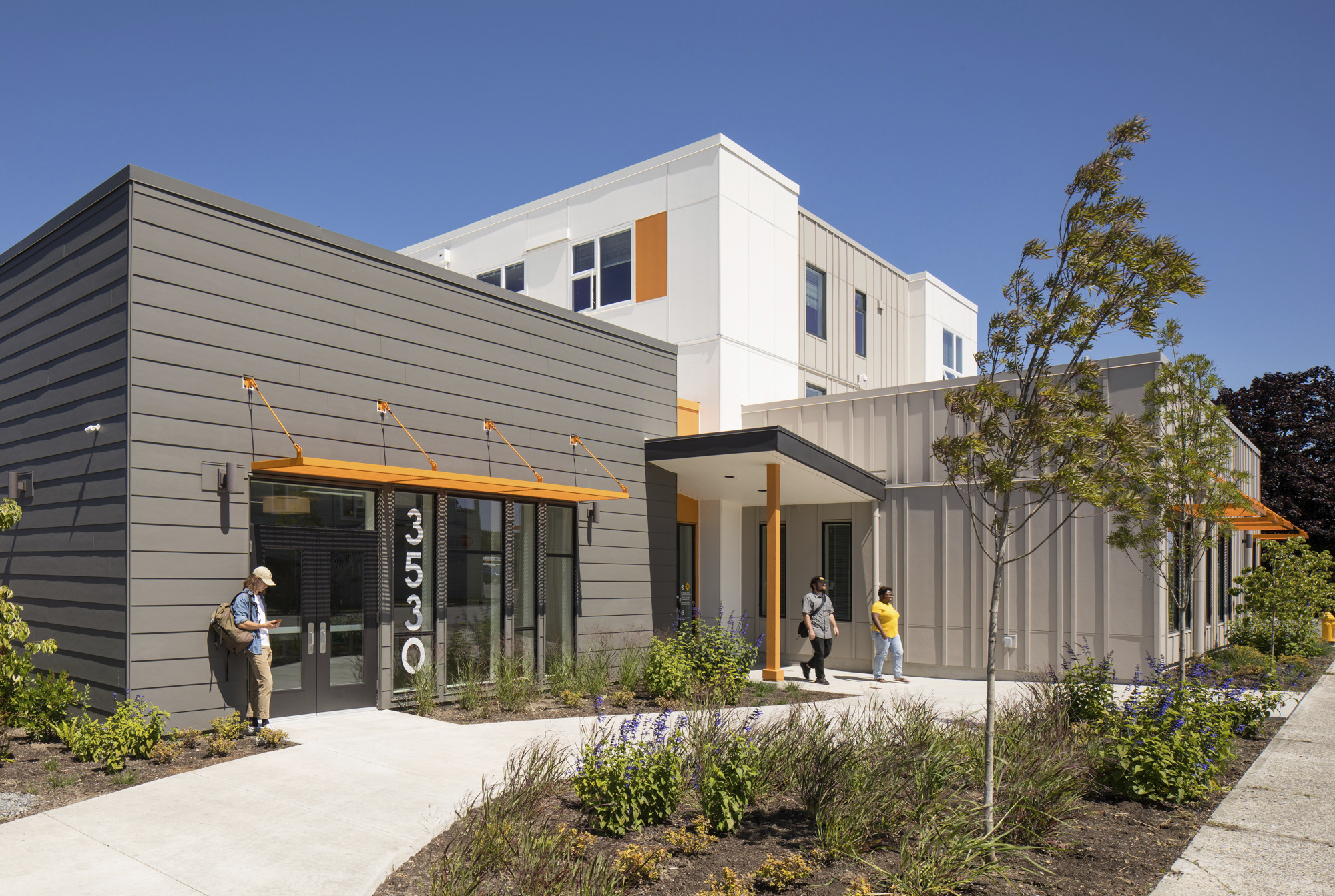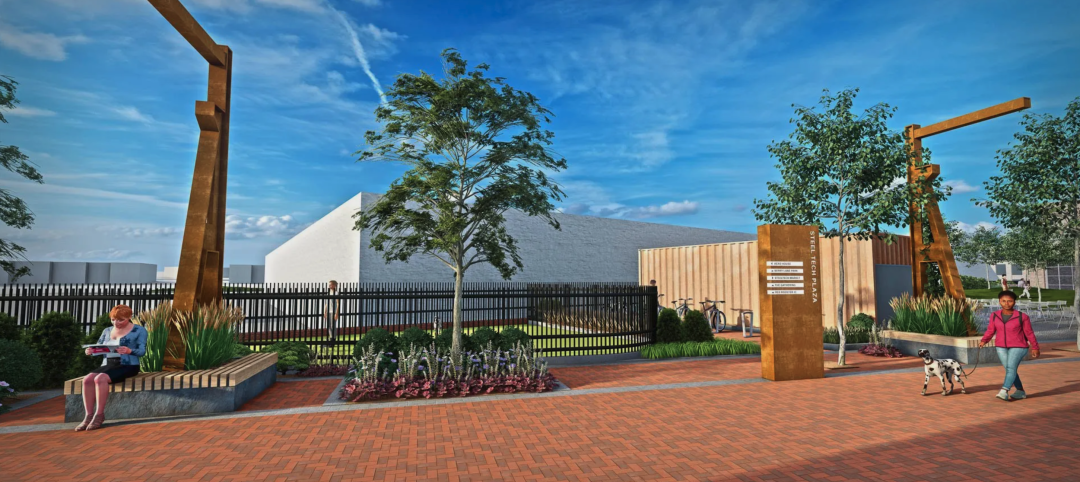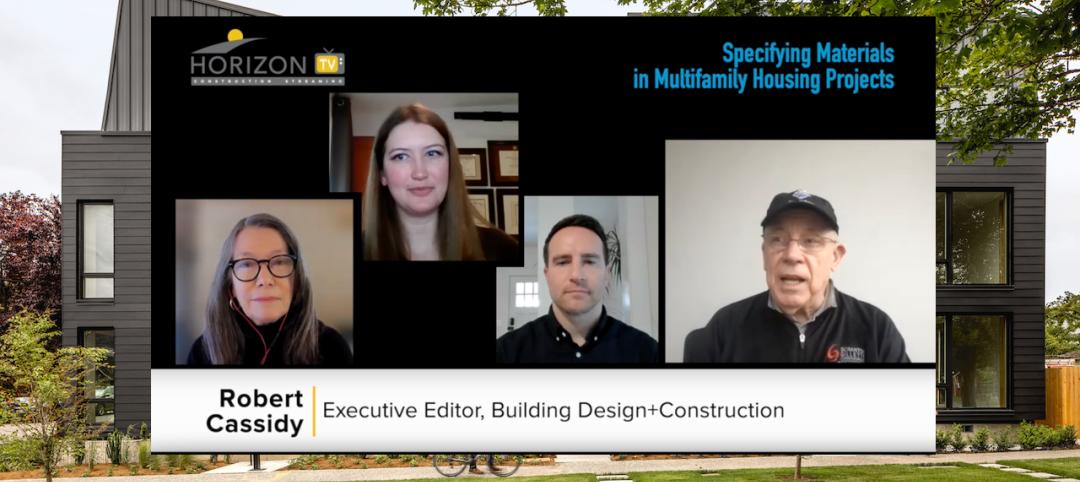Recently, while commuting past a tent community on my way to work, I was reminded that a medium- to large-sized city in the U.S. today without a homelessness problem is a rarity. In my home city of Seattle, for example, we need tens of thousands of new affordable units per year to keep up with population growth, which city officials expect to hit one million people by 2044.
As an architect who has focused on designing affordable housing developments in Seattle, Los Angeles, and Boise for more than 25 years, I know firsthand achieving these projects is complicated and requires the combined resources of developers, contractors, architects, engineers, and judicial plan reviewers, as well as a range of public and private funding sources. It also takes a huge amount of collective will.
In the face of this challenge, there is one simple but extremely powerful way to address the “problem” of affordable housing. We can change the language we use to describe housing and actively shift it to be more inclusive. The descriptor “essential housing” allows for that framework. While “affordable housing” often conjures associations with government handouts and helping those who cannot, for whatever reason, help themselves, the reality is there are huge swaths of our population for whom housing costs are prohibitive. They are our teachers, baristas, firefighters, nurses, and many other essential workers. For many in our communities, rising rents and increased demand for housing means they are only one paycheck away from being unhoused.
It’s time to stop thinking of affordable housing as a handout which is someone else’s problem to solve and start calling it what it is: Essential Housing, a crucial component of a thriving local community.
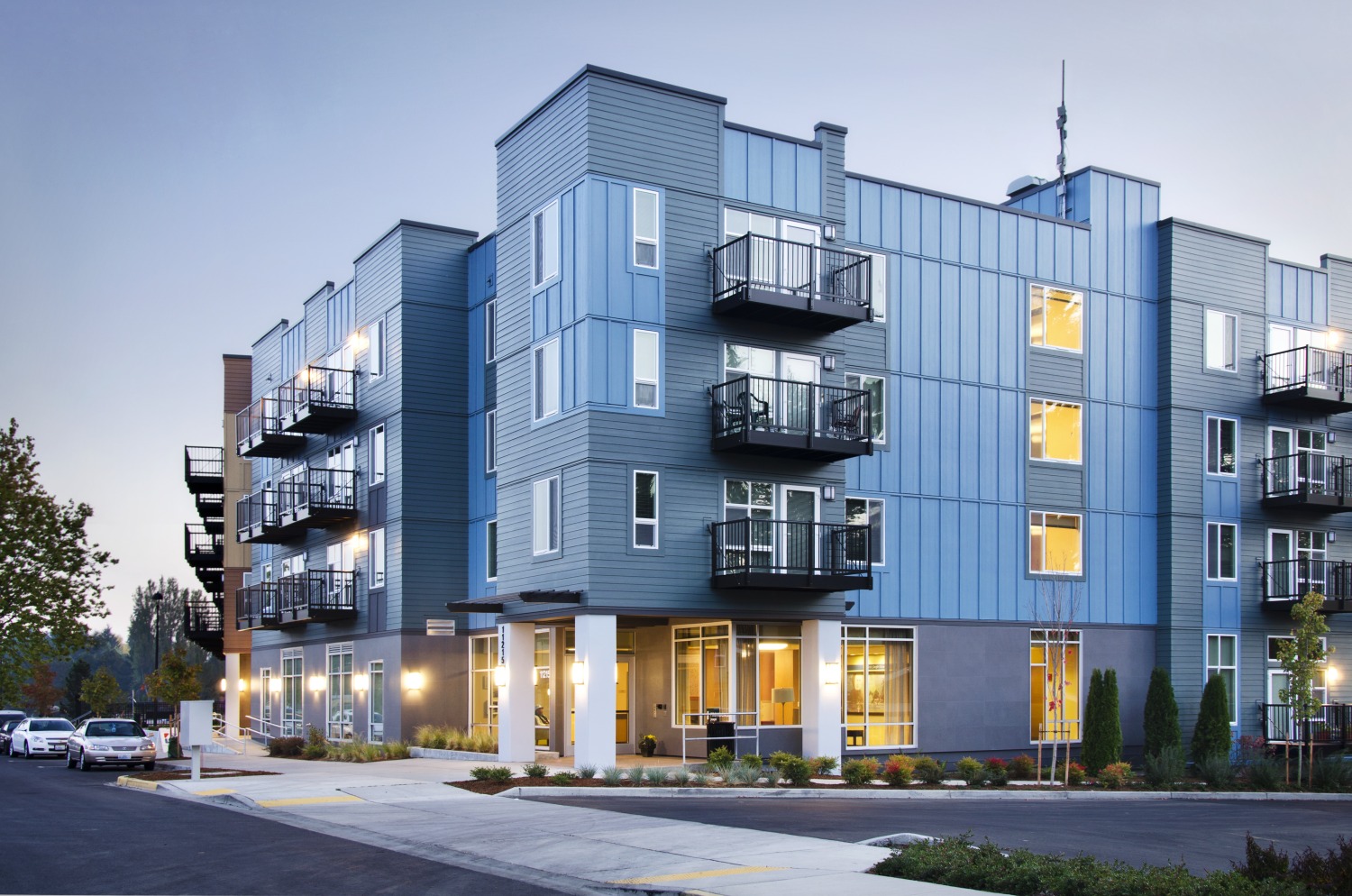
Essential housing is a collective endeavor
When we reframe housing as something essential to communities, many more possible solutions come to light. There are numerous connections between stable housing and other elements of community life such as wellness, faith, and public safety, and looking at housing through these lenses reveals new opportunities to tackle the issue.
Framing Essential Housing through the lens of healthcare reveals the link between stable housing and healthy community members. Anyone living unhoused, or in substandard living conditions, is at a greater risk for negative health impacts, and many mental health issues can only be solved after obtaining permanent housing. Understanding housing as essential to a healthy community means there are opportunities to direct medical investments toward the endemic housing shortage. At GGLO, our design for Providence Joseph House in south Seattle is a successful example of how healthcare companies—in this case, Washington-based Providence Health & Services—can direct resources towards bolstering the housing supply.
Looking at Essential Housing through a faith-based framework, we see the connection between stable housing and the necessary support services often offered by religious or mission-based entities. There are many examples of churches, synagogues, and temples using their available space to build much needed housing developments, including GGLO’s recently completed Cocoon House. This development provides 40 units of housing alongside support services for at-risk youth in Snohomish County, Wash., on the site of a former church.
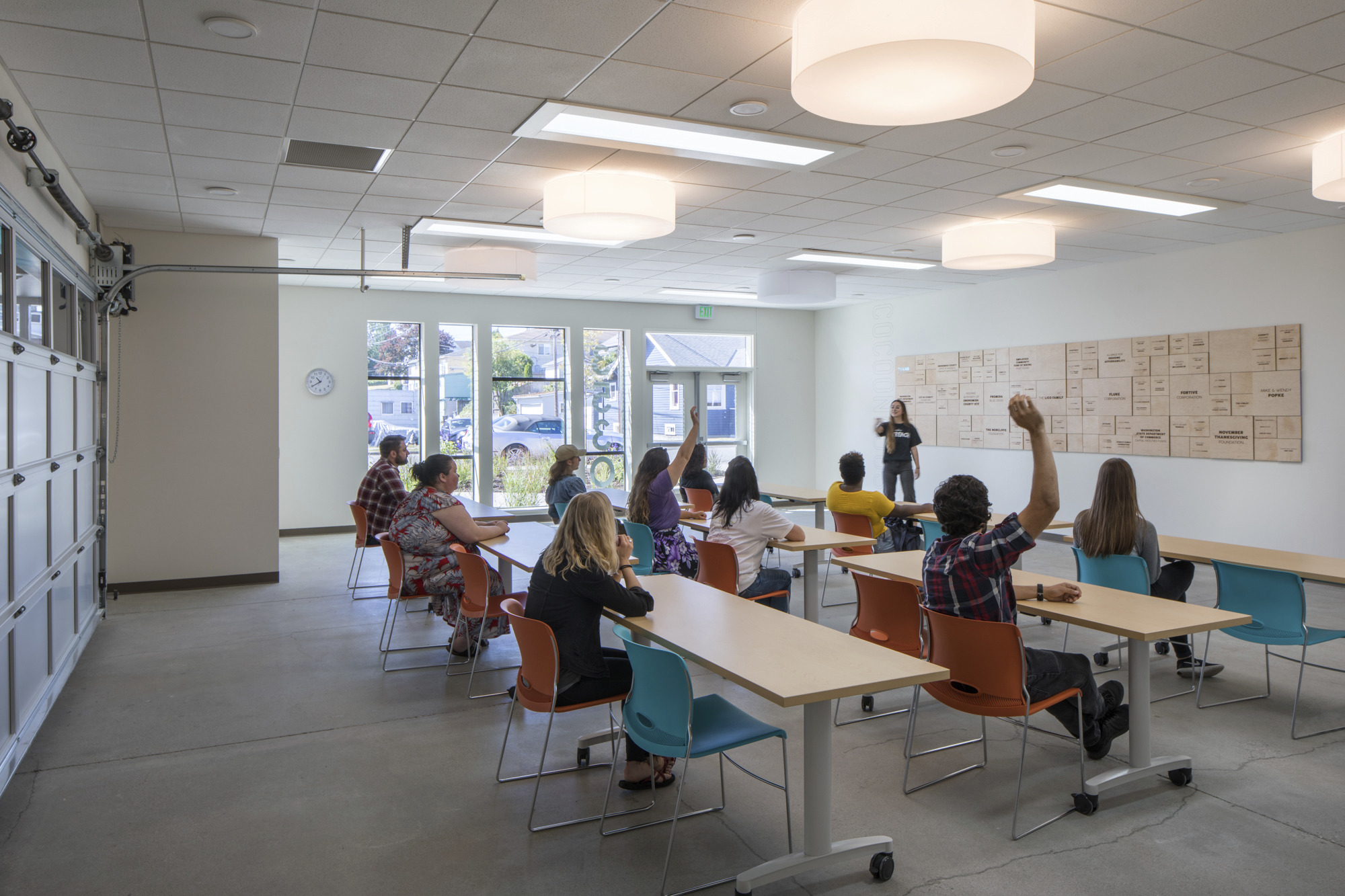
Understanding housing as an essential aspect of ensuring public safety asks us to treat the issue with more urgency. We hear proclamations of local, regional, and statewide housing emergencies year after year, yet we see the challenge continue to grow with little resistance. If we can act with a similar haste to public health emergencies like the COVID-19 pandemic, or to a flood, fire, or earthquake, we can make a meaningful impact.
Design solutions
Although the housing challenge is massive and impacts all aspects of community life, there is not a one-size-fits-all approach to solving it. The strategies must be as varied as the stories of those facing a lack of housing. It is truly not possible to create enough housing through traditional means; reframing the issue as essential can help drive a new sense of urgency and an all-hands approach to developing new solutions.
We are seeing great strides in modular and manufactured housing to speed up the production of this essential resource. Whether a full living unit, or a kit of parts that can be componentized and rapidly assembled, these strategies can rapidly create new shelter. Individual Tiny Homes provides rapid shelter, and multi-story buildings built from factory components can provide permanent stable homes on an expedited timeline.
Rezoning and densifying land for housing is rapidly occurring in cities like Seattle, Boise, and beyond. Former malls and retail centers are being adapted to housing, including Seattle’s Northgate Mall and Lynnwood’s Alderwood Mall, which GGLO is working to convert to transit-oriented redevelopments by creating new housing to complement existing retail infrastructure.
Converting existing vacant office buildings into residential is also seeing an increased opportunity, as evidenced by GGLO’s current Alloy at Midtown project in Phoenix, Ariz. This development takes advantage of the existing infrastructure to create housing at greater speed than new construction. We must match increasingly vacant office space to the huge housing needs across our communities.
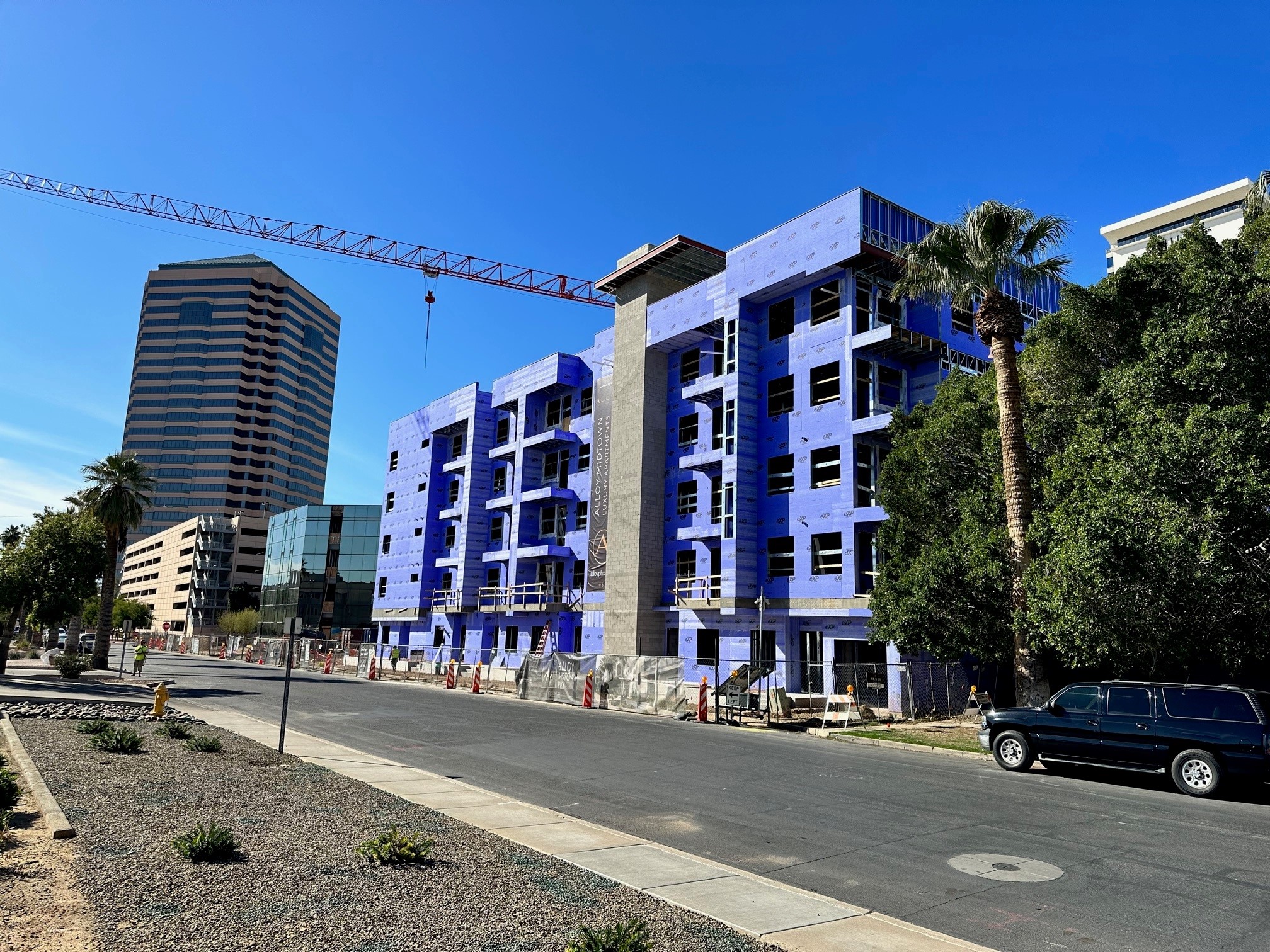
Always, we must remember the importance of an inclusive and community-centered process where integrated teams of designers, builders, operators, and users come together to plan buildings that address the unique needs of the communities where they are situated. Essential Housing requires new advocacy and creativity around the design and development process. Encouraging innovation and speed in permitting and jurisdictional processes, while still maintaining public health and safety, is imperative.
While much of this can feel overwhelming, it is possible if we come together as communities to address these pressing housing challenges. Changing the narrative to reframe housing as essential is a first step. Through the power of language, we can tap into our collective willpower and, hopefully, pool our energy and resources to build a better future.
Related Stories
Mixed-Use | Apr 27, 2023
New Jersey turns a brownfield site into Steel Tech, a 3.3-acre mixed-use development
In Jersey City, N.J., a 3.3-acre redevelopment project called Steel Tech will turn a brownfield site into a mixed-use residential high-rise building, a community center, two public plazas, and a business incubator facility. Steel Tech received site plan approval in recent weeks.
Multifamily Housing | Apr 27, 2023
Watch: Specifying materials in multifamily housing projects
A trio of multifamily housing experts discusses trends in materials in their latest developments. Topics include the need to balance aesthetics and durability, the advantages of textured materials, and the benefits of biophilia.
Multifamily Housing | Apr 17, 2023
World's largest multifamily building pursuing ILFI Zero Carbon certification under construction in Washington, D.C.
The Douglass, in Washington, D.C.’s Ward 8, is currently the largest multifamily housing project to pursue Zero Carbon Certification from the International Living Future Institute (ILFI).
Contractors | Apr 10, 2023
What makes prefabrication work? Factors every construction project should consider
There are many factors requiring careful consideration when determining whether a project is a good fit for prefabrication. JE Dunn’s Brian Burkett breaks down the most important considerations.
Affordable Housing | Apr 7, 2023
Florida’s affordable housing law expected to fuel multifamily residential projects
Florida Gov. Ron DeSantis recently signed into law affordable housing legislation that includes $711 million for housing programs and tax breaks for developers. The new law will supersede local governments’ zoning, density, and height requirements.
Resiliency | Apr 4, 2023
New bill would limit housing sprawl in fire- and flood-prone areas of California
A new bill in the California Assembly would limit housing sprawl in fire- and flood-prone areas across the state. For the last several decades, new housing has spread to more remote areas of the Golden State.
Multifamily Housing | Mar 24, 2023
Washington state House passes bill banning single-family zoning
The Washington state House of Representatives recently passed a bill that would legalize duplexes or fourplexes in almost every neighborhood of every city in the state.
Multifamily Housing | Mar 24, 2023
Multifamily developers offering new car-free projects in car-centric cities
Cities in the South and Southwest have eased zoning rules with parking space mandates in recent years to allow developers to build new housing with less parking.
Multifamily Housing | Mar 24, 2023
Average size of new apartments dropped sharply in 2022
The average size of new apartments in 2022 dropped sharply in 2022, as tracked by RentCafe. Across the U.S., the average new apartment size was 887 sf, down 30 sf from 2021, which was the largest year-over-year decrease.
Geothermal Technology | Mar 22, 2023
Lendlease secures grants for New York’s largest geothermal residential building
Lendlease and joint venture partner Aware Super, one of Australia’s largest superannuation funds, have acquired $4 million in support from the New York State Energy Research and Development Authority to build a geoexchange system at 1 Java Street in Brooklyn. Once completed, the all-electric property will be the largest residential project in New York State to use a geothermal heat exchange system.



